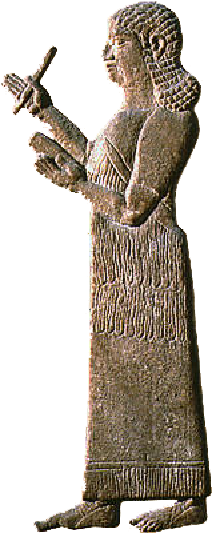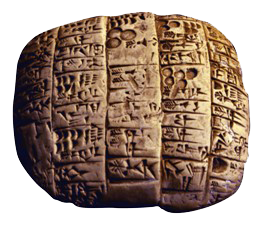
Languages of Ancient Mesopotamia
Come and journey with me into the unknown and lost world of Mesopotamia and its tribes. I will take you on a journey to the past and reveal to you the hidden meanings in the silent clays, which have been literaly littered with words and inscriptions for thousands of years.
The invention of writing brought forth the revelation of a brilliant civilization. From the fruit of writing came forth a highly educated society. Due to this community of scribes, we obtain our knowledge in the fields of: religion, law, agriculture, math, science and astronomy. Mesopotamian scribes (Nagura) were brilliant in recording sound into clay. They accomplished this by using syllables such as: MI, LI, GE, BE, LA, TA and so on. The Nagura recorded major events in a limited space by using abbreviated words that were made up of two or three letters. For example: Sha means Come, ANI means They, BA means Want and Shu means They Came. The search and the deciphering of ancient writings of the Sumerian, Akkadian, Babylonian and Assyrian, which I have compiled, is to reveal the sounds of the ancient language, and its relationship with the current Sumerian, Akkadian, Babylonian and Assyrian languages and religions of today. Note: The Assyrian reader should read the Assyrian writing as they appear and keep in mind, in cuneiform the Zaw’ee characters don't exists. Refer to pushaqa read as sounds with no Zaw’ee characters. Cuneiform is one of the very first recognized forms of written concept known as Dish Writing. Appearing in Sumer approximately the 30th century BC, arriving into the late 4th millennium (the Uruk 4th period), cuneiform writing started as a method of pictographs. In the third millennium the writings expanded, the graphical expressions became refined and more conceptual as the number of graphic symbols in use also became smaller, from about 1,000 different types in the Early Bronze Age (1500-1200 B.C.), to about 400 different types in Late Bronze Age. The earlier Sumerian script was modified for the writing of the Akkadian, Babylonians, Assyrian languages, and it motivated the Ugaritic and Old Persian symbols.Cuneiform inscription was slowly substituted by the Phoenician alphabet, throughout the Neo-Assyrian Empire, which arose 934 B.C. and finished in 609 B.C., by the 2nd century AD, the writing had turn out to be nonexistent.Practice learning Cuneiform language and symbols in its simplest form. Cuneiform Lesson 1 Cuneiform Lesson 2 Cuneiform Lesson 3 Cuneiform Lesson 4 Cuneiform Lesson 5 Cuneiform Lesson 6 Cuneiform Lesson 7 Cuneiform Lesson 8 Cuneiform Lesson 9 Cuneiform Lesson 10 |
|---|



